Today in this blog we will discuss about History of Sanskrit language in depth. Sanskrit one of the oldest languages in the world native to India used in Divine worship or in Vedic rituals or language that has been used for writing ancient Indian manuscripts. This is a general perception right but very few people are aware of the fact that the binary number system which is the basis for modern-day Computing originated from Sanskrit.
How Sanskrit gave birth to 1700 plus Indian languages and how Sanskrit gave birth to combinatorics a field of mathematics that has an incredible number of applications in modern designs and Technology like machine learning.How is Sanskrit related to computer?
we made this blog very responsibly and every spec of the detail that you’re going to see here is fully backed with research to keep it crisp and clear.
Quick Links
How Sanskrit originated
According to the continental drift theory, this is how our Earth looked like around 250 million years ago and today we have something like this with all the continents separated from each other
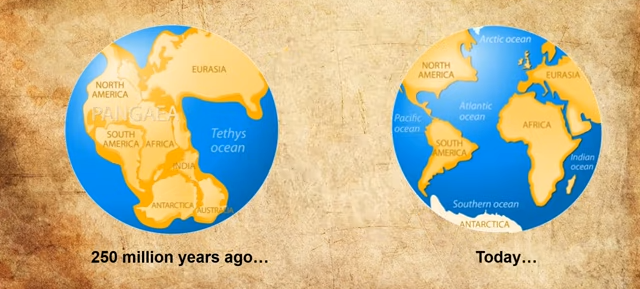
As the landmasses get separated from each other the life forms also follow the same pattern they get distributed across the continents. They split and they diverged and evolved. This has been the pattern for everything in this world.
Language is no exception according to modern history proto-indo-European language something that existed between 4500 and 2000 BC is the mother of all the Indo-European language families as we know it today. Unraveling Pingala Contribution to Mathematics
Around 50 percent of the world’s spoken languages today have originated from proto-indo-European. here is an example of how the word Mother from proto-indo-European evolved into mother in different Indo-European languages that are spoken today English, Scottish, Irish, Portuguese, Spanish, French, and Italian.

Everything originated from Latin while Greek has its way right from the olden times and German from the proto-germanic, Norse proto Slavic proto-indo-iranian so a lot of language families that you can see here and how they originated from the proto-indo-european language. Why learn Sanskrit
If we zoom into India Sanskrit is the root language for a vast majority of the languages spoken in India today well not just in India but Sanskrit also shares similar routes as in certain European languages like Lithuania.
Languages that share the same roots as Sanskrit
- Avestan of ancient Persia
- ancient Greek of Greece
- old Latin
- Lithuania & Baltic languages
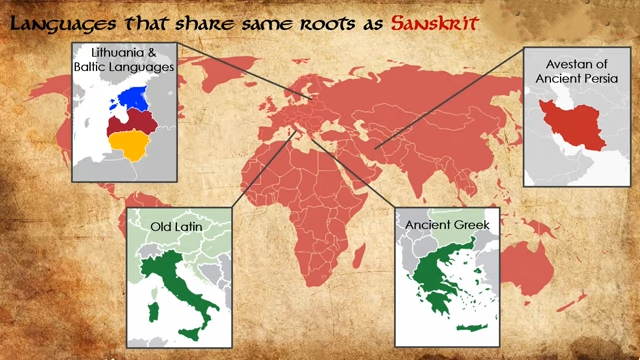
All these have very close connections with Sanskrit particularly the Baltic Nations and especially Lithuania shares very close routes with Sanskrit and that’s what the Department of the Lithuanian Studies of the University of Lithuania says as . you can read. You can also read 13 interesting facts about Sanskrit language
in 2019 the government of Lithuania published a book of 10,000 common words between Sanskrit and Lithuania and presented it to the Vice President of India SRI Venkai Naidu as you can see the words how similar are
| English | Sanskrit | Lithuania |
| Fire | Agni | Ugnas |
| God | Deva | Dievas |
| Death | Mrityu | Mirtis |
| Day | Dina | Diena |
| Tooth | Danta | Dantis |
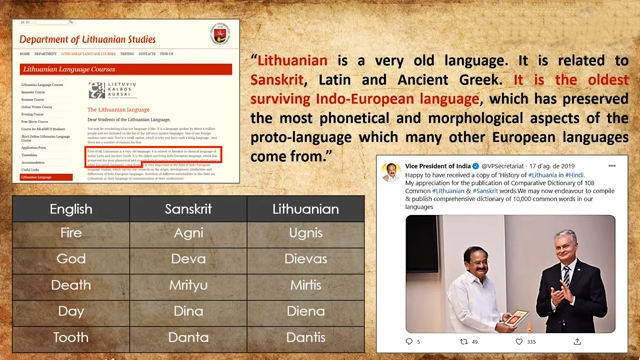
In addition to the linguistic aspects on the cultural front as well Lithuania shares certain common roots with the ancient Vedic culture. The Pagan traditions of Lithuania are called Romuva or it derives from its root word ROM which means peace and calmness.Is Sanskrit still spoken?
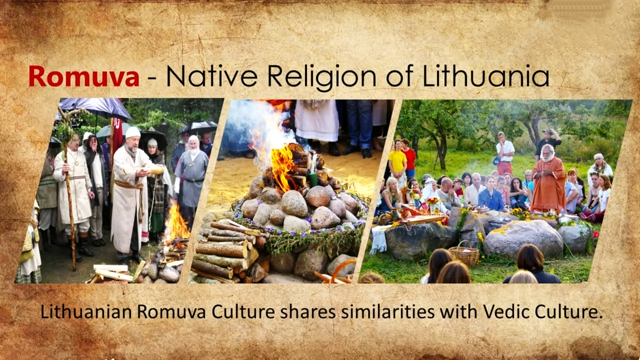
It has interesting similarities with The Vedic culture on fire worship of the elements of nature Etc
How Indian languages originated from Sanskrit
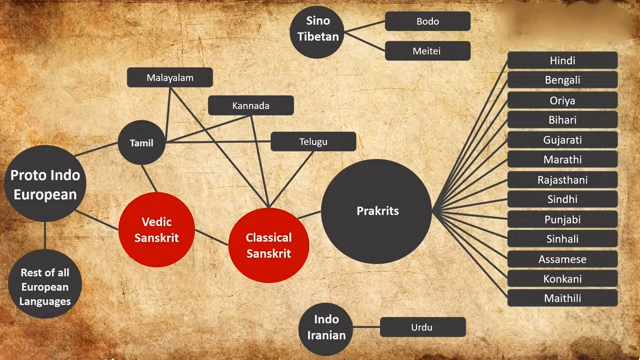
let’s leave out the rest of All European languages and focus only on India. Proto-indo-european Vedic Sanskrit and Tamil were the first to evolve from Vedic Sanskrit. Vedic Sanskrit evolved the classical Sanskrit.
Which is more commonly used as a spoken language in Ancient India from both classical Sanskrit and Tamil evolved Malayalam, Kannada, and Telugu and from classical Sanskrit evolved a wide variety of languages called Prakrits.
Which include Hindi, Bengali, Oriya, Bihari, Gujarati, Marathi, Rajasthani, Sindhi, Punjabi, Sinhali, Assamese, Konkani, and Maithili and from cyanotibetan family, we have bodu and methi which are spoken in the northeastern parts of India and from the indo-iranian family we have Urdu. Kitchen items name in Sanskrit |
All this is fine but what is the basis for the proto-indo-european language as per the current history that is the farthest that we can go back into the past we don’t know the further origins of pro-indo-european language
Every question has an answer and the only way to find it is just to search for it from this point onwards this documentary is going to take a totally different direction and before that, I’d like to say one thing the truth is something that always exists it’s about how we seek it and you’ll get to know why I said that
first, let’s get the basics right it is not Sanskrit, it is Samskrutam which means a well-perfected language. so let’s address it as Samskritam from here
According to recorded history 2600 years ago since 600 BC Panini Maharshi wrote A Treatise on Samsrutam grammar which is called Ashtadhayi. it’s eight chapters not just in India but across the world
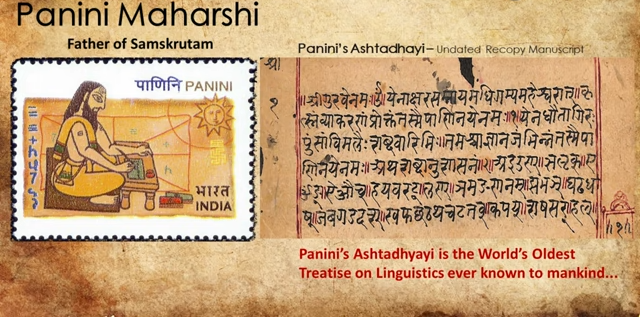
Today Ashtadhayi is considered the world’s oldest living Treatise on grammar and also the most complex and comprehensive one on Linguistics ever known to mankind.
It says that Lord Shiva at the end of his Cosmic dance made 14 beats out of his damaru and pronounced 14 principles which are called Shiva sutras.

In the 14 Shiva sutras are as follows

These 14 principles are the foundations for human speech these are not alphabets these are called phonemes or lifting sounds that a human vocal cord can make human speech is the result of an orchestrated effort of different body parts like diaphragm vocal cord teeth tongue lips the way you breathe
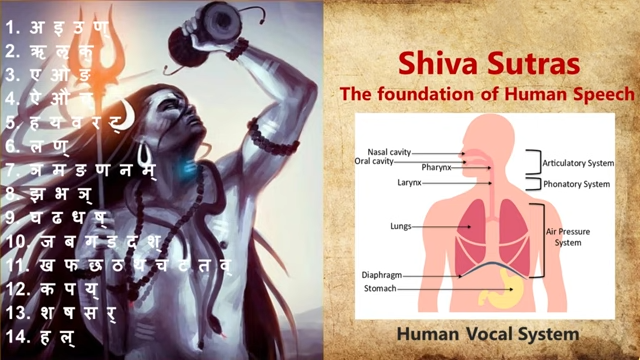
The easiest way to understand Shiva sutras is these are the exhaustive list of sounds that you can make with your vocal cords. these sounds mix among themselves to create the alphabet that we use today. Let’s try again and here is an undated manuscript of Panini.

Please note that this is not the original version of Panini but is a copy of the awareness version still a few centuries old.
now let’s see how Shiva sutras gave birth to different hidden languages as I said these phonemes mix among themselves to create the alphabets let’s take the first three for example

so that is all the Indian languages like this rest all alphabets are created as a mixture of Shiva sutras among themselves
In my opinion, Shiva sutras are the textbook definition of the very ethos of India which is unity in diversity. There is no other country in this world that is as linguistically diverse as India and it’s incredibly surprising to see how everything rolls up to the Shiva sutras.
there you have Shiva sutras and from Shiva sutras came Rig Veda, Yajur Veda, Saama Veda, and Atharva Veda.

As part of them and then we have six Vedangas, Shiksha study of phonetics, vyakarana study of grammar, chhandas study of Rhythm and Niruktha study of etymology, jyothishya study of astronomy, kalpa study of rituals.

Then we have four Upaveda, ayurveda study of medicine and Life Sciences, Gaandharveda study of Music art, and dance, DhanurVeda study of archery and warfare and Arthashastra study of Business Administration Commerce, and political sciences.
This is called Shruti the primordial knowledge system and this is how Shiva sutras gave birth to the entire system. In short and more commonly all these put together are called The Vedas.
This entire knowledge system is in sanskrutam. In the field of linguistics samskrutam always takes center stage when it comes to research because of its Antiquity as well as its comprehensiveness as a language.
This is a research paper from one of the European universities and as you can read it quotes Siva Sutras and has Universal admiration also. it quotes Panini as one of the greatest monuments of human intelligence.
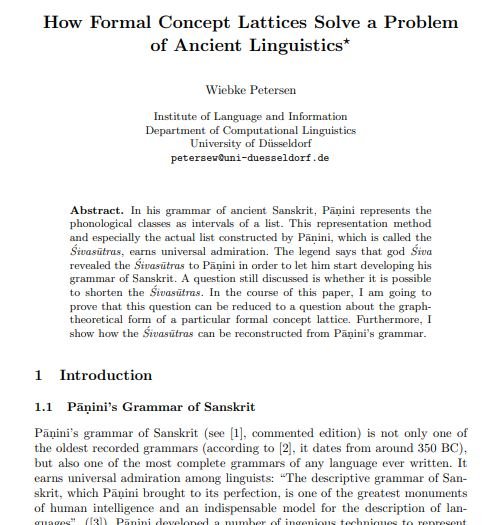
Here is another reference from a book that was written almost 100 Years Ago by Leonard Bloomfield he is considered the father of American Linguistics. In his book, he regards Samskrutam as one of the finest linguistic achievements known to mankind.

Here is another research paper from a European University again on the mathematical analysis of Shiva sutras as you see it codes Panini as one of the oldest recorded grammar in history and also it says that continues to inspire Linguistics even today.


Founder of Sanskrit or Samskrutam

Panini
To summarize some scrutiny as we know it today is a collective effort of four great gurus as we saw it’s Panini who gave Ashtadhyayi
Pingala
Then we have Pingala who gave Chandas shasthra, a framework for constructing Sanskrit poems. He’s also the inventor of the binary number system as well as Combinatory.
Katyayana Maharishi
Then we have Katyayana Maharishi who gave varttikakara which is a further elaboration of Panini Ashtadhyayi. He is also a mathematician who gave the mensuration and geometrical principles in Ancient India.
Patanjali
Fourth we have Patanjali who gave maha bhashyam which is an elaborate explanation of Panini Ashtadhyayi. Patanjali is also the inventor of yoga and ayurvedam both as we know today.
it is a very unfortunate situation that all this great knowledge system which was created in Sanskritam is no longer understandable by the Indians today. because we lack the competence of samskritam thanks to the Mughal Innovations and Imperial colonization.
